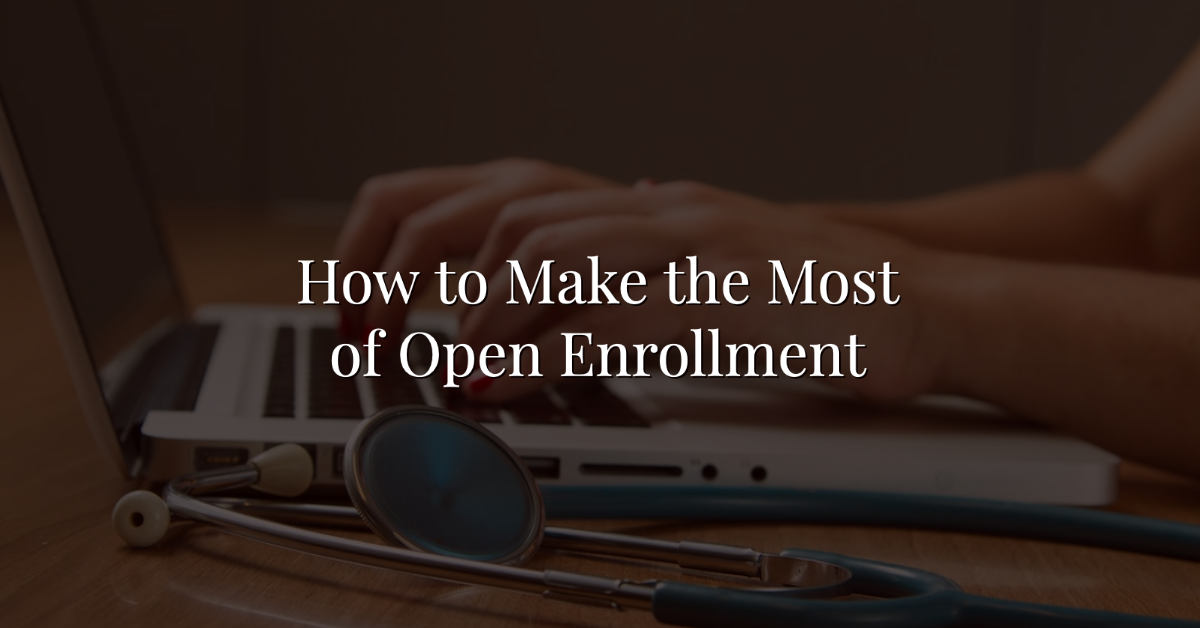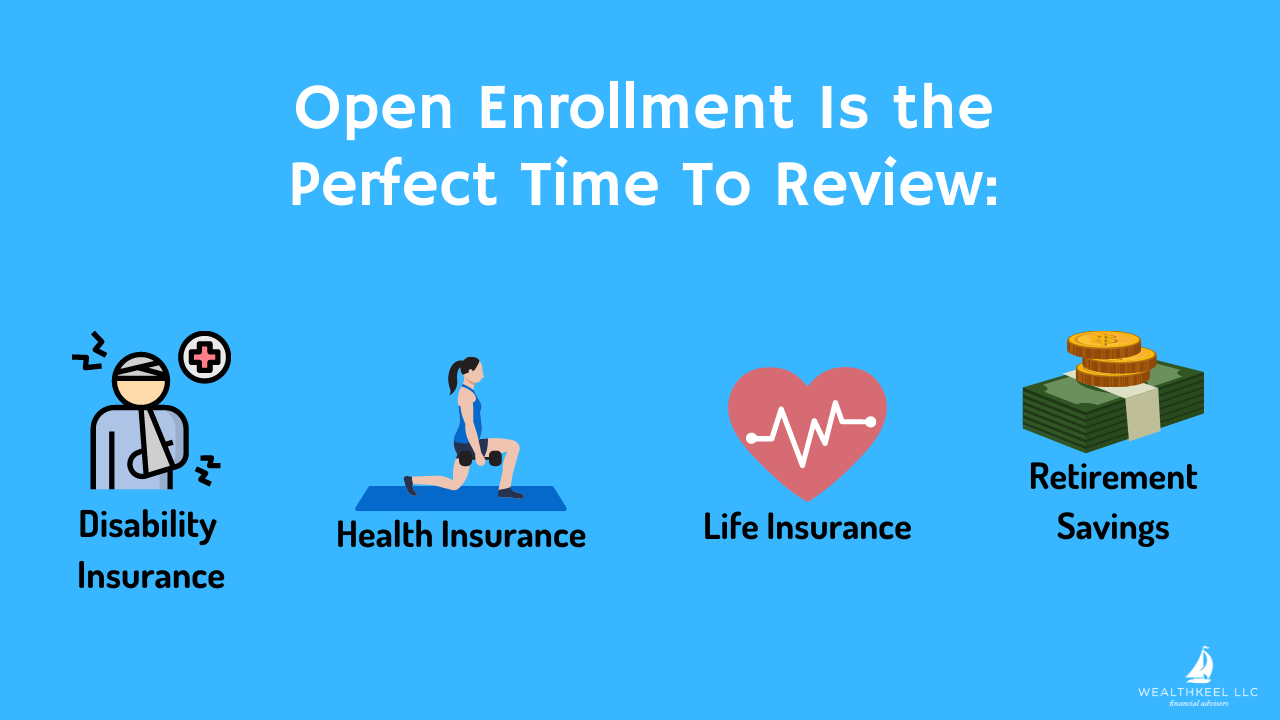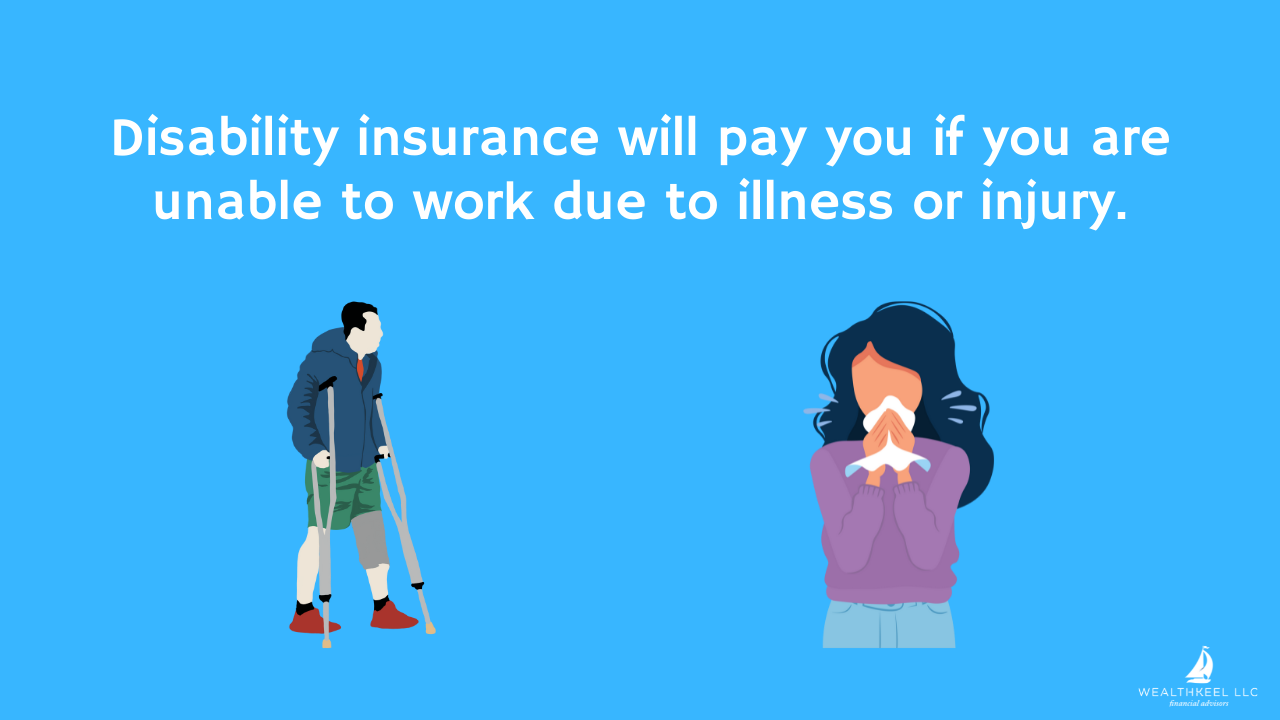It’s important to make the most of open enrollment, the period during the year that an employer allows its employees to elect or change benefit options available to them. These benefits vary by employer but can include things like health insurance, disability insurance, life insurance, dental insurance, etc. The timing and duration of open enrollment can also change from employer to employer, but for benefit plans starting January 1 of the following year, open enrollment will commonly take place in October-November. However, keep in mind, some hospitals will utilize a spring open enrollment to match up to the training windows (i.e. the summer starts).
It is crucial to carefully analyze your benefits during this time as any decisions you make will likely be locked for an entire year until the next open enrollment period. Following these tips can help ensure you make the most of your open enrollment:
KEY TAKEAWAYS:
- Review your benefits package before the open enrollment period starts and consider any major life events or changes in coverage you may need.
- Review the following policies to make sure they fit your needs: health insurance, life insurance, disability insurance, and retirement savings.
- Keep an eye out for other benefits your employer may provide, like a Flexible Savings Account (FSA), commuter benefits (parking and transit), tuition reimbursement, and health & wellness programs.
Prefer video over the blog? We’ve got you covered! Watch our YouTube video as we dissect this blog post for you.
Be Prepared
This may seem like a no-brainer, but with open enrollment only lasting for a short period (usually 2-4 weeks), knowing what you need to do ahead of time can be a huge stress reliever. A study by UnitedHealthcare found that 36% of employees spent less than one hour reviewing benefits during the open enrollment period. We’re not asking for a huge time commitment, but the advantage of thoroughly reviewing your benefits package is well-deserving of at least one hour.
A good starting point is to consider how your needs have changed since last year.
For example, maybe you got married, brought home a new child, or even just received a raise. These changes may require a change in coverage, whether it be for life, health, or disability insurance, and it is important to consider how any recent or expected life changes will impact your insurance need.
It is also important to review your current policies, including both those provided through your employer and any individual policies you have. Gathering any summaries you have for existing policies will make it much easier to compare any upcoming changes to your plan and decide how you should handle those changes.
Review Any Changes Made by Your Employer
It is common for employers to make changes to plans and premiums to keep up with the times. Once you receive your open enrollment packet, you will need to review any changes to your existing plan coverages and premiums. Changes to your plan may make a different plan more attractive than what you currently have.
If your spouse/significant other has access to employer benefits, it will be important to review their options as well. It might make sense to switch to their plan as changes are made.
When reviewing plan options, it is crucial to consider all aspects of coverage and the total cost of the coverage. The total cost is impacted by the premiums, deductibles, co-insurance, and maximum out-of-pocket expenses.
It is also important to note whether the employer made any change in providers. Your employer may switch insurance companies based on the overall cost of coverage. If this happens, your current doctor or dentist may not be covered under the new plan. In this circumstance, you will need to contact the insurance company to make sure your doctor is still covered. Otherwise, you may face out-of-network costs or may be denied claims.
Identify the Policies that Best Meet Your Needs
By now, you should have identified what your needs are, and now you must choose how to cover those needs best. You may find that your current coverage is still sufficient in meeting those needs, but you will not come to that conclusion without reviewing any changes that have been made by your employer.
Below is an overview of the most common employer benefits you will have available and how to determine which policies to enroll in:
Health Insurance
Health insurance is usually the largest portion of employer benefits, so it is crucial to select the plan that is best for you and your family. Important questions to ask yourself are: how often do I have medical expenses? Are those minor expenses, or do I commonly have large expenses come up? How likely is it that I will continue to see similar expenses in the future?
Answering these questions will help you determine what policy is right for you. If you frequently have large medical expenses that you can reasonably expect to continue in the next year, it may make sense to select a plan with a lower deductible and a minimal out-of-pocket maximum. If you rarely have medical expenses come up and can reasonably predict that will continue in the next year, you might want to consider a plan with a higher deductible. Selecting a high deductible health plan (HDHP) should allow you to open and save to a Health Savings Account (HSA).
HSAs provide a triple tax benefit: contributions are tax deductible going in, funds grow tax-deferred while in the account, and withdrawals are tax free if used for qualified medical expenses. Not only can this be a great tool to pay for medical expenses, but it can also provide an emergency fund before age 65 and may be used as a stealth IRA after age 65. Some employers may even offer a match on contributions you make into the HSA.
An alternative to the HSA is a Flexible Savings Account (FSA). An employer may set up an FSA for its employees to help cover dental, vision, and medical expenses. Employees can make tax deductible contributions into the account up to annual limits to lower taxable income. Employers may also make contributions to the account on behalf of employees without reducing the amount the employee can contribute.
A disadvantage of the FSA, when compared to the HSA, is that the funds contributed to the account must be used by the end of the plan year or the money is lost. Some plans have since started to allow for $500 to roll over from one year to the next, but many do not have that feature. Either way, it is crucial only to contribute an amount you can reasonably expect to use during the year.
Life Insurance
Another common benefit an employer may provide is group life insurance. Often, the employer will provide eligible employees a small amount of coverage for free, while also allowing employees to purchase supplemental group life insurance. This additional coverage is usually offered in multiples of salary. For example, an employer may offer $50,000 in free coverage while allowing employees to purchase supplemental coverage up to 4 times their salary.
Open enrollment is a great time to review your family’s current life insurance coverage. If you determine your current coverage does not meet your current needs, purchasing supplemental group insurance through your employer could be a great option. Not only is group life coverage usually cheaper than what you would find in an individual policy, but it also does not require a medical exam, making the application process much easier.
It is important to note that you should not rely on life insurance coverage provided through your employer as your only form of insurance. If you were to leave your employer, you may be able to convert the group policy into an individual policy to keep your coverage, but this would result in a significant increase in the cost. Therefore, it is best to use a combination of both individual policies and any group policies offered by your employer.
If you’re just getting your financial life in order and do not know whether you need life insurance yet, check out our post on Life Insurance for Young Adults.
Disability Insurance
Disability insurance is one of the most overlooked types of insurance, leaving many people underinsured in this category. This is concerning when you consider the fact that people under the age of 35 have a 1 in 3 chance of becoming disabled for at least six months at some point in their lives. Disability insurance will pay you a portion of your income if you are unable to work over a period due to illness or injury. Often this insurance need can be addressed by enrolling in coverage through your employer during open enrollment.
There are both short-term and long-term disability policies. Short-term policies will pay benefits (usually 60-70% of your income) for a few months to a year depending on the terms of the policy. Long-term policies will pay benefits (usually 60-70% of your income) until the disability ends, retirement is reached, or until a certain number of years have passed since benefits started, depending on the policy.
There are several ways to obtain a disability policy. The first is through employer-sponsored coverage at work. Employers may pay all or a portion of the premiums for the policy. The second method is to purchase supplemental coverage through the workplace. Employers who do not pay the premiums of the policy may offer coverage as a voluntary benefit where employees buy coverage through the employer’s insurance broker at a group rate. Lastly, you can buy an individual policy through an insurance broker or insurance company directly.
A good rule of thumb is to have 60-70% coverage of your income. It is also important to know that if your employer pays the premium on the policy, then the benefits will be taxable as ordinary income. This results in a reduction of the benefit you are expecting to receive. You should also know that coverage through your employer will typically only cover your base salary while excluding any bonuses or commissions. For these reasons, you may need to utilize both coverages through your employer, as well as an individual policy to fully meet your needs.
Retirement Savings
Another common benefit provided by employers is a retirement savings plan. Depending on your employer, this may be in the form of a 401(k), 403(b), 457 plan, etc.
Typically, you are able to make contributions and allocation changes at any point in the year, but open enrollment can still be a great time to review your retirement accounts.
Many companies now have auto-enrollment in their retirement savings accounts, meaning you would have to select to opt-out of making contributions to it. Oftentimes companies will have 3% of your salary automatically defer into the retirement account. At any point you can increase, decrease, or completely shut off this contribution. However, some companies do not have this auto-enrollment and in order to have your salary deferred into the account, you would have to make this election on your own. You can do this online or by contacting your HR department. An easy way to check if you are currently making contributions is to look at your most recent pay stub to see if a portion of your salary is being deducted into the retirement account.
A general rule of thumb is to contribute at least the full company match into the account so that you aren’t missing out on “free” money. You will need to check your Summary Plan Description (SPD) or contact your HR department to determine if there is a company match available. Companies may select different methods for calculating the match, so it is important to find out what equation they use.
For example, one company may match 100% of employee contributions up to 3%, while another may match 50% of employee contributions up to 6%. It is important to note that in both scenarios the max employer contribution is 3% of the employee’s salary. In the second scenario, the employee would have to contribute 6% to receive the full 3%, while the first employee would only need to contribute 3% to receive the full match.
Once you have determined you are contributing enough to receive the full company match (or at least the max contribution that will fit in your budget) you will want to review your allocation in the account. You will need to make sure that the holdings in the account align with your retirement goals. Commonly, employers will offer target-date funds which can be a simple way to ensure your investments align with your time horizon. However, if this is not an option you will need to pay more attention to your current allocation and how future contributions will be allocated as well.
Other Benefits
Every company will have their own benefits package, and the items listed above are usually (hopefully!) the main heavy hitters. There are a few other benefits that we like to put on your radar as well:
Dependent Care Flexible Spending Account (FSA) – This is very similar to the health care FSA noted above, but this can be used for childcare needs (or if you are caring for an adult).
Commuter Benefits/Transit-Parking Cards – This is more common in areas with large public transportation, but it is another great way to use pre-tax funds to help pay for your commuter needs. We often see two options: 1) parking costs and 2) public transit.
Keep an eye out for tuition reimbursement, health & wellness programs, fitness reimbursement, bicycle reimbursement (wear your helmet!), and if you are an academic hospital physician, always sign up for those discounted sports tickets for your favorite collegiate teams!
While the end of the year typically comes with enough stress for people, taking the time to review your employer’s benefits can save you a lot of stress and headaches in the future.
Looking for a more thorough all-in-one spot for your financial life? Check out of free eBook, A Doctor’s Prescription to Comprehensive Financial Wellness.
Disclosures


